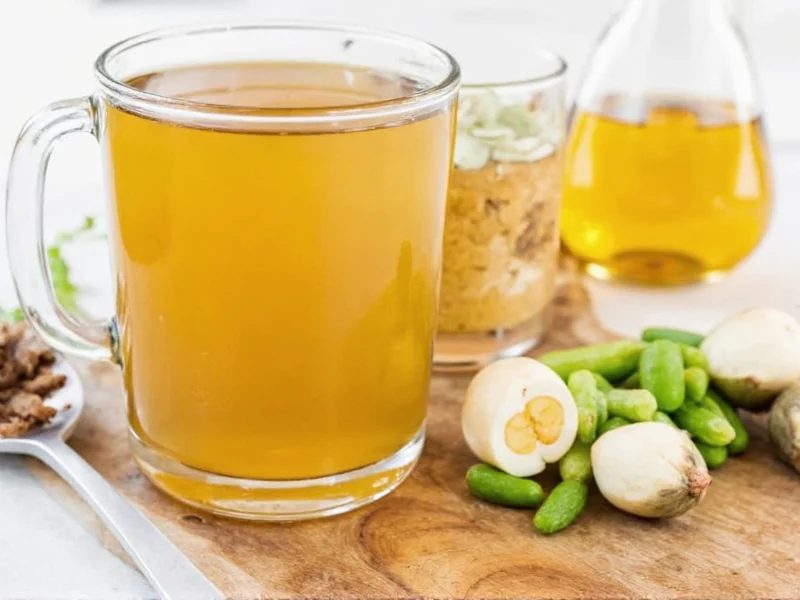Understanding the subtle yet significant differences between vegetable broth and vegetable stock is essential for home cooks and professional chefs alike. While these terms are often used interchangeably in grocery stores and recipes, they serve distinct purposes in culinary applications. The key distinction lies not just in their flavor profiles but in their fundamental roles in cooking methodology.
Core Differences Explained
Vegetable broth typically contains salt and additional seasonings, making it flavorful enough to drink on its own. Commercial vegetable broth products are formulated as finished products that can be consumed immediately. Vegetable stock, by contrast, is intentionally under-seasoned and serves as a neutral cooking base. Professional kitchens almost exclusively use stock as a building block rather than a finished product.
| Characteristic | Vegetable Broth | Vegetable Stock |
|---|---|---|
| Seasoning | Contains salt and additional seasonings | Minimal or no salt, unseasoned |
| Preparation Time | 30-60 minutes | 2-4 hours |
| Primary Ingredients | Vegetables, salt, herbs, sometimes tomato products | Vegetable scraps, mirepoix, herbs, no salt |
| Culinary Purpose | Finished product, ready to consume | Cooking foundation, building block |
| Flavor Profile | Bolder, more pronounced | Neutral, subtle background flavor |
Ingredient Composition and Preparation
The ingredient composition reveals why these two products function differently in recipes. Vegetable broth recipes typically include a higher proportion of flavorful vegetables like tomatoes, celery, and onions, along with added salt, herbs, and sometimes tomato paste or other flavor enhancers. The preparation time is shorter because the goal is to extract immediate flavor.
Vegetable stock preparation emphasizes vegetable scraps and trimmings that might otherwise be discarded. Chefs often use onion skins, carrot peels, celery leaves, and herb stems to create a more complex flavor base. The extended simmering time (typically 2-4 hours) allows for maximum flavor extraction without the need for added salt. This unseasoned approach gives cooks complete control over the final seasoning of their dishes.
Culinary Applications and Substitution Guidance
Knowing when to use vegetable broth versus vegetable stock can significantly impact your cooking results. Vegetable broth works best when you need immediate flavor—such as in simple soups, quick sauces, or when deglazing pans. Its pre-seasoned nature makes it convenient for weeknight cooking when time is limited.
Professional chefs prefer vegetable stock for sauces, braises, and complex dishes where precise seasoning control is crucial. Since stock contains no added salt, it allows cooks to build flavors gradually without worrying about oversalting. When substituting one for the other, remember to adjust your seasoning accordingly—reduce added salt when using broth in place of stock, and consider enhancing store-bought broth with additional aromatics when substituting for stock.
Homemade Preparation Tips
Creating your own vegetable broth or stock at home offers superior flavor control and reduces food waste. For vegetable stock, save vegetable trimmings in a freezer bag until you have enough for a batch. Classic mirepoix (onions, carrots, celery) forms the foundation, enhanced with parsley stems, garlic skins, and mushroom stems. Simmer these ingredients in water for 2-4 hours, then strain.
For vegetable broth, use fresh vegetables and add salt during the last 30 minutes of cooking. Include flavor boosters like tomato paste, dried mushrooms, or a Parmesan rind for depth. Many home cooks find that roasting vegetables before simmering creates a richer, more complex broth—this technique works particularly well for mushroom or tomato-based broths.
Commercial Product Considerations
When purchasing store-bought versions, carefully read labels to determine whether you're getting broth or stock. Many manufacturers use the terms interchangeably, but checking the sodium content provides a clue—broth typically contains 400-800mg of sodium per cup, while stock has minimal added salt. Organic and low-sodium options have become more widely available, giving consumers greater control over ingredients.
Consider the intended use when selecting a commercial product. For quick weeknight meals, ready-to-use vegetable broth offers convenience. When preparing more complex dishes where you control all seasoning, unsalted vegetable stock provides greater culinary flexibility. Some specialty brands now offer both options clearly labeled, making selection easier for home cooks.











 浙公网安备
33010002000092号
浙公网安备
33010002000092号 浙B2-20120091-4
浙B2-20120091-4